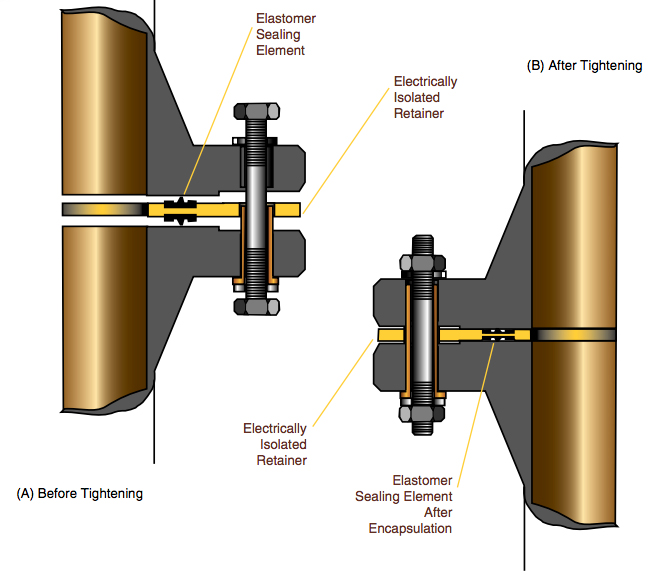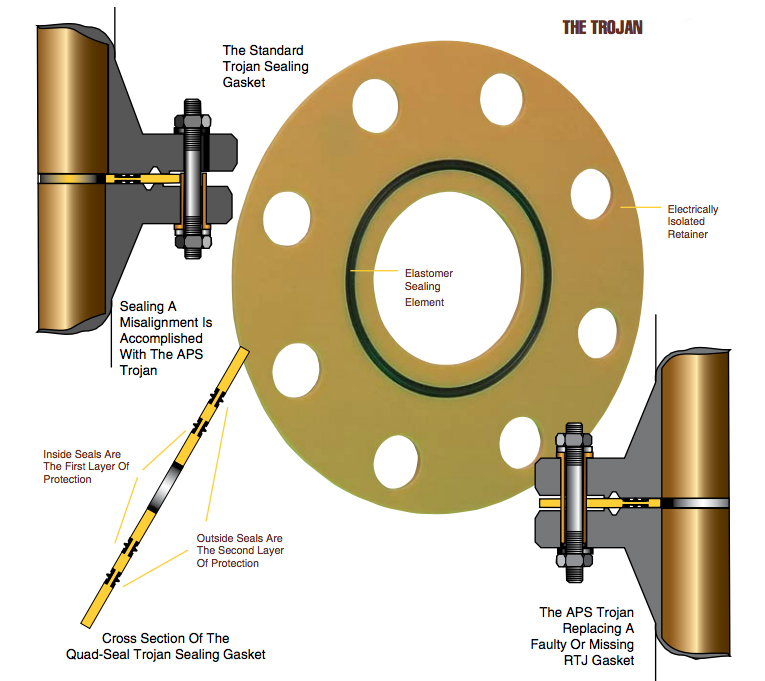Trojan Sealing Gasket, by APS

- Trojan gaskets are state-of-the-art in near zero leakage static sealing
-
Description
Trojan gaskets are state-of-the-art in near zero leakage static sealing. The elastomer sealing element is encapsulated in the electrically insulated retainer. The encapsulation of the sealing element permits only micro-exposure of the seal to hostile environs of fire, chemicals and corrosive fluids.
Because of the controlled confinement of the elastomer sealing ring within the available volume of the groove in the retainer, 92% to 94% filled volume, a consistent controlled-pressure seal can always be obtained without tremendous bolt loads. Reduced loads allow for reduced flange thickness, smaller bolts and smaller circles.
The cross section of APS’s Trojan Sealing Gasket (A) shows the elastomer sealing element as it appears before compression between flanges. This compression causes the seal to effectively fill the void of the groove and encapsulate, permitting only micro exposure of the actual seal to hostile elements either from within or without.
QUAD SEAL TROJANFour seals on the new Quad-Seal Trojan further insures the integrity of the sealing capability of an already-proven reliable gasket. For areas where absolute zero leakage is a must, the Quad-Seal Trojan works twice as hard.
-
Advantages
- Can be utilized with mismatched flanges
- Can be utilized with misaligned flanges
- Can be used in place of RTJ or BX rings
- Little initial torque required
- No re-torquing required
- Sealing ring cannot be left out
- Seal design tested for high pressures
- Reusable
- Competitive price
- Limited area of seal exposed (long fire life)
- Compensate for pressure fluctuations, compression changes, vibrations, temperature, variations, etc.
- Greatly reduces human error during installation
- Large selection of materials available
- Three to four times the dielectric strength necessary
- Low installation and maintenance costs
- Gaskets through 144"
-


